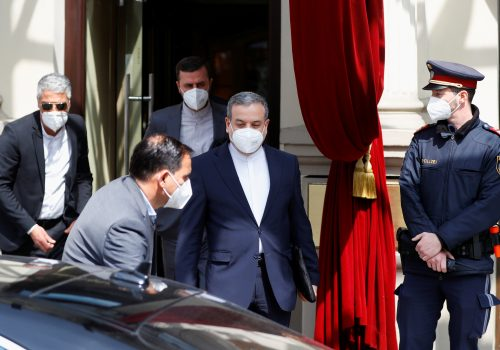Iran govt stays silent over tax evasion by the super-rich
With the fourth greatest crude oil reserves and the second largest natural gas reserves in the world, Iran is one of the richest nations in terms of prospective wealth. These nations, often known as "rentier states," typically generate all of their own revenue, and taxes make up a minimal portion of their budgets. The outcome is that wealthier citizens now have a de facto tax hideaway.
Iran has implemented new tax laws in recent years, partially to make up for revenue lost as a result of US economic sanctions. But the very wealthy are still hardly impacted.
After the Joint Comprehensive Plan of Action (JCPOA), which lifted international sanctions in return for Iran's nuclear programme being used for peaceful purposes, the country experienced its fastest growth—12.5 percent—in 2016. Iran's economy has been in decline since 2017, and in 2020 it had a GDP decline of around 5%, in part as a result of the Donald Trump administration's withdrawal from the JCPOA and reimposition of US sanctions in May 2018.
The rial's value against the US dollar has fallen by 646 percent since January 2018. (from 42,880 rials to one US dollar to 320,000 rials in July 2022). Inflation reached a 40 percent high in 2021, and double-digit unemployment prevailed.
In the current Iranian calendar year (March 2021 to March 2022), Iran's budget deficit was $12 billion, or more than 30% of the overall budget. Tehran was forced to manufacture money as a result of the decline in oil exports, which increased inflation and caused food prices to rise by more than 50%.
Iran's tax policy have had to change as a result of these issues. It would appear that the really wealthy are a natural target. Despite Iran's general economic difficulties, Forbes magazine stated in June 2021 that the country's super-rich population had increased by 21.6 percent annually, compared to 6.3 percent globally.
According to Forbes, there are 250,000 millionaires in Iran, which places it 14th in the world for wealth. Eighty-six million people, or around 0.3 percent, are considered to be extremely wealthy. In contrast, Saudi Arabia has 210,000 millionaires despite exporting 8.2 times more oil. With 36 million people, that translates to 0.24 percent being extremely wealthy.
0.3 percent of Iranians have assets worth at least $250 billion, which helps to better comprehend the disparities in that country. In comparison, Iran's 2021 GDP of $231.55 billion is 8% higher.
The implementation of 48 sizable industrial projects costing $17 billion in thirteen provinces was ordered by Iranian President Ebrahim Raisi in February, and state media referred to this as "the largest industrial investment in Iran's economy." These initiatives, however, represent just one-fifth of the assets held by the ultra-wealthy Iranians.
Taxes provide for somewhere between 36% and 90% of all governmental funding worldwide. However, the contribution in Iran is 40%. The super-rich in Iran make up no more than 5% of the population.
One quadrillion rials ($3.125 billion) is the anticipated amount of tax evasion, of which 50% is direct tax evasion and the remaining 30% is attributable to refusal to pay. Tax evasion, according to Rajab Rahmani, a member of the budget committee of the parliament, is equivalent to the budgets of fifteen of Iran's thirty-one provinces.
The fact that interest on bank deposits is not taxed is one factor contributing to the super-rich paying so little.
Based on an analysis of the bank transactions of almost 300,000 people with incomes over 10 billion rials, Omid Ali Parsa, the former head of Iran's National Tax Administration (INTA), revealed that half of the nation's billionaires pay no taxes and the other half pay less than the legal minimum.
Although Iran's first tax law was passed more than a century ago, it has only been in the last ten years that the Islamic Republic has started to take taxes more seriously. However, many Iranians either view taxes as onerous or are unaware of their obligations.
The fact that government organizations don't give the tax authority enough information helps evasion. For instance, a tax on luxurious and expensive homes has been included in the country's budget for three years, yet the first two years saw no tax collection from this source. Only slightly more than $156,000, according to the Iranian Students News Agency, has been collected over the past five months.
The super-rich, which include many regime insiders, have been able to amend various laws over time to their favour due to their access to centres of power, despite the Islamic Republic's promises of economic equity. For instance, just 35% of physicians have tax system registered. They have been able to keep the income tax on their income at 10% while others pay up to 30% because to their sway over the legislature.
Ayatollah Ali Khamenei, the Supreme Leader of Iran, has other institutions, organizations, and command centres that are exempt from paying some taxes. Examples are the Mostazafan Foundation and Astan Quds Razavi.
Ayatollah Ruhollah Khomeini, the first Supreme Leader of Iran, also excused Astan Quds Razavi from paying income taxes. Only value added tax and a few employee levies were required of it.
Many urban properties, along with businesses, farms, and mines, are owned by the Astan Quds Razavi Foundation. Because government officials have less faith in financial transparency, it is difficult to evaluate its assets. Iranian experts, meanwhile, put the country's net worth at $15 billion or higher.
The forty-nine economic, social, educational, cultural, and media entities that make up this institution could conceivably be subject to taxation even if many of its endowment holdings are exempt under the law. But the authorities have made a different decision.
There is a general public
criticism at the super-ability rich's to evade paying taxes given Iran's
economic woes. Whether the government will alter its policy in the future is an
open question.



Comments
Post a Comment